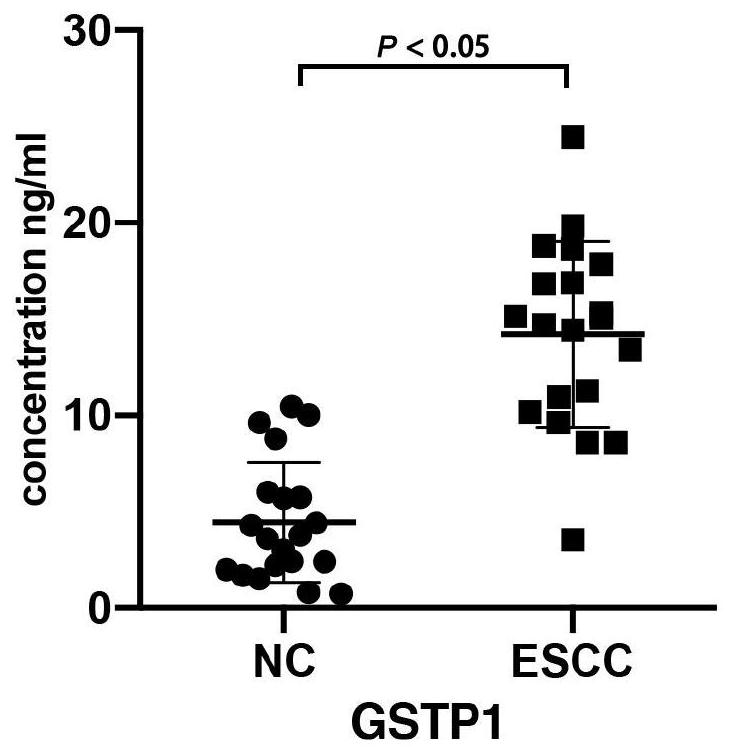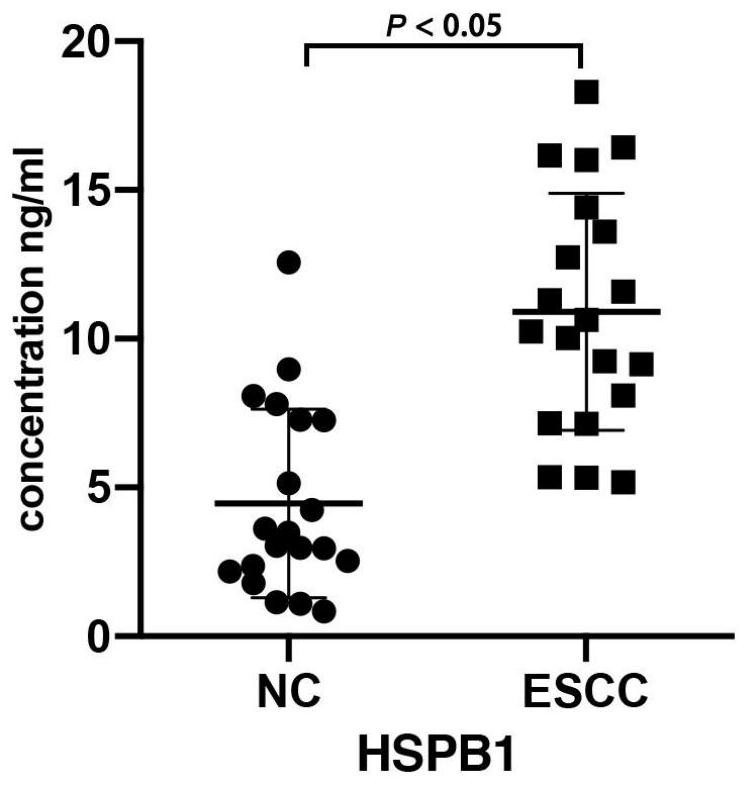Application of combined gene in esophageal squamous carcinoma
A technology of esophageal squamous cell carcinoma and gene, applied in the field of biomedicine, can solve the problems of inability to meet early diagnosis and extensive screening, difficulty in complete tumor resection, low sensitivity and specificity, etc., and achieve early diagnosis and large-scale screening Limited methods, efficient early diagnosis and large-scale screening, and the effect of improving detection sensitivity and specificity
- Summary
- Abstract
- Description
- Claims
- Application Information
AI Technical Summary
Problems solved by technology
Method used
Image
Examples
Embodiment
[0025] In this example, cancer and adjacent tissue samples were collected from patients with primary esophageal squamous cell carcinoma (diagnosed by pathology) in the Thoracic Surgery Department of West China Hospital, Sichuan University. The samples were rapidly transported at low temperature and digested to obtain esophageal squamous cell carcinoma single cell suspension for on-machine sequencing. In this example, cancer and paracancerous samples from 11 patients with esophageal squamous cell carcinoma were finally collected, all of which were male patients.
[0026] The present embodiment has done the preparation work of serum samples for carrying out the ELISA indirect method experiment, and the details are as follows:
[0027] (1) Collect specimens of patients with primary esophageal cancer (esophageal cancer diagnosed by pathology) in West China Hospital of Sichuan University, and all specimens were collected from the whole blood of the research subjects with red-headed...
PUM
 Login to View More
Login to View More Abstract
Description
Claims
Application Information
 Login to View More
Login to View More - R&D
- Intellectual Property
- Life Sciences
- Materials
- Tech Scout
- Unparalleled Data Quality
- Higher Quality Content
- 60% Fewer Hallucinations
Browse by: Latest US Patents, China's latest patents, Technical Efficacy Thesaurus, Application Domain, Technology Topic, Popular Technical Reports.
© 2025 PatSnap. All rights reserved.Legal|Privacy policy|Modern Slavery Act Transparency Statement|Sitemap|About US| Contact US: help@patsnap.com



